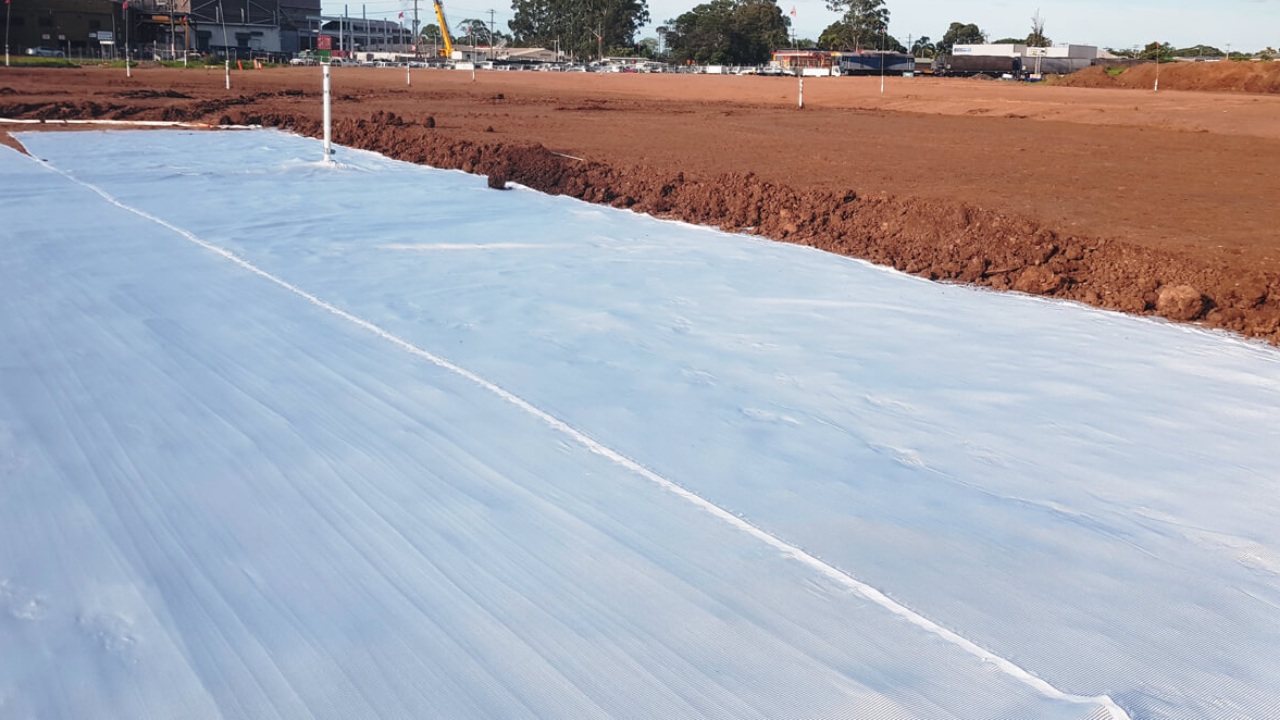What is strength at strain and how could it affect your project?
As a leading geosynthetics supplier, a lot of customers ask us about low and high strength, low and high strain, and the relationship between these factors and a successful project.
Our NSW Technical Consultant Garry Gersak explains it this way.
“A good analogy is thinking of the mechanics of a trampoline. A trampoline mat with high strength at low strain will not sag much when a person jumps on it,” notes Garry.
“However, a trampoline with high strength but at high strain will sag so much the person may end up hitting the ground. When we transfer this concept to geosynthetics, you can see that a geotextile may not develop its ultimate strength because it has not yet stretched or elongated enough.”
Situations where you need high strength geotextiles
If you are constructing a road, high early strength at low strain (or elongation) will minimise ruts.
Woven geotextiles are often used in structural applications. Typically, highways built over very soft subgrades with high embankments use high strength woven (HSW) geotextiles, which can be manufactured with strengths of up to 1,600kN/m. These fabrics are ‘engineered’ to provide the designers with specified strength and need testing to ensure their effectiveness in the long term.
Garry notes that if you get this wrong and choose an unsuitable product, your road will develop ruts and be rendered useless as the geotextile has not yet developed or ‘mobilised’ its high strength.
“Your trampoline has sagged and the person has hit the ground,” adds Garry.
“To combat this, it’s important to look for high strength woven geotextiles that have proven short and long term design longitudinal strength.”
What about low strength geotextiles?
High strength at strain isn’t always required. If your project requires geotextiles for separation, cushioning or filtration applications, there’s no real need for high strength.
This is where non-woven geotextiles come into play: these types of fabrics are not high strength however they have long elongations. Garry notes that non-woven geotextile fabrics are not usually subject to the same engineering scrutiny in the selection process, instead they are selected using a specification such as TfNSW R63.
Get help and advice selecting the right geotextiles for your project
Getting the right geosynthetics for your application is vital for long term success.
Understanding strength at strain is just one part of selecting the right products – that’s why the engineering team at Polyfabrics is here to support you with advice, technical information, engineering support and fast delivery throughout Australia.
Call our team to find out more about our product range or contact Garry Gersak directly on 0428 444 700.

